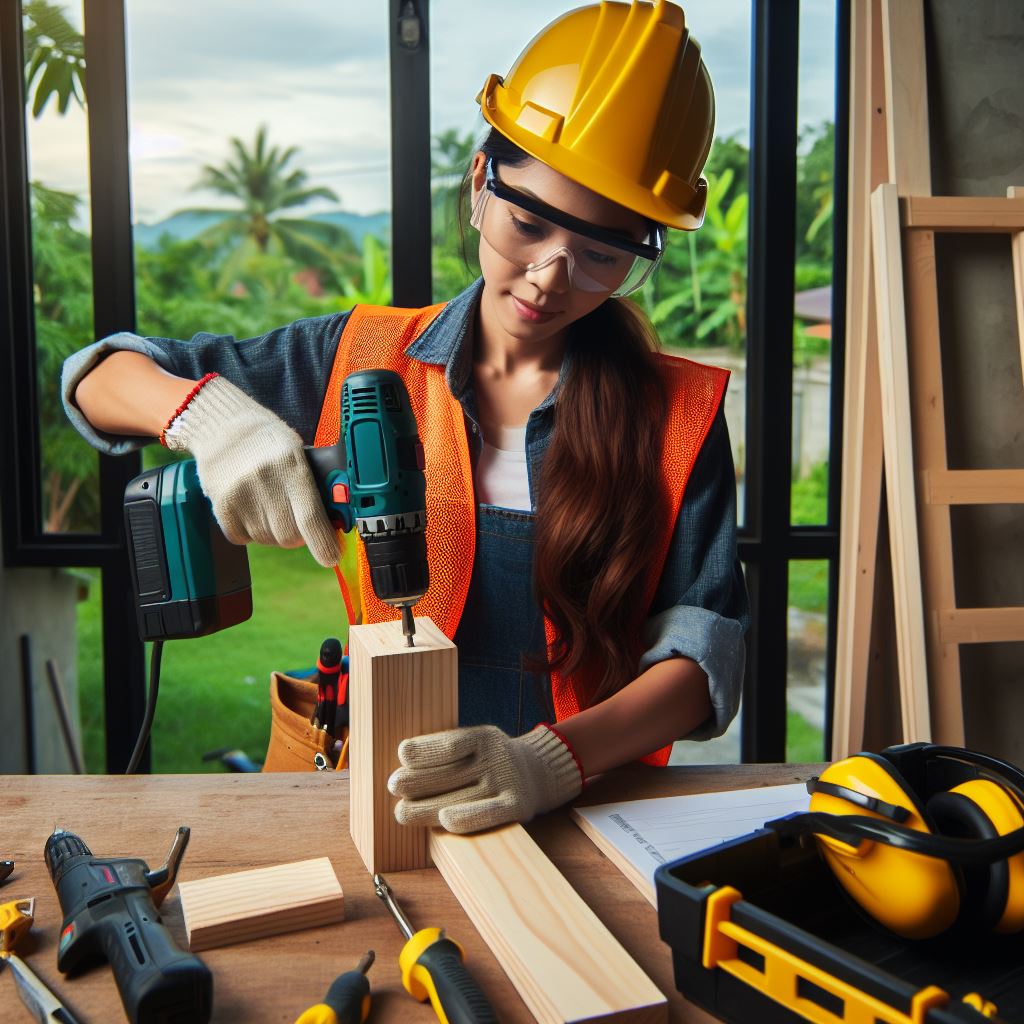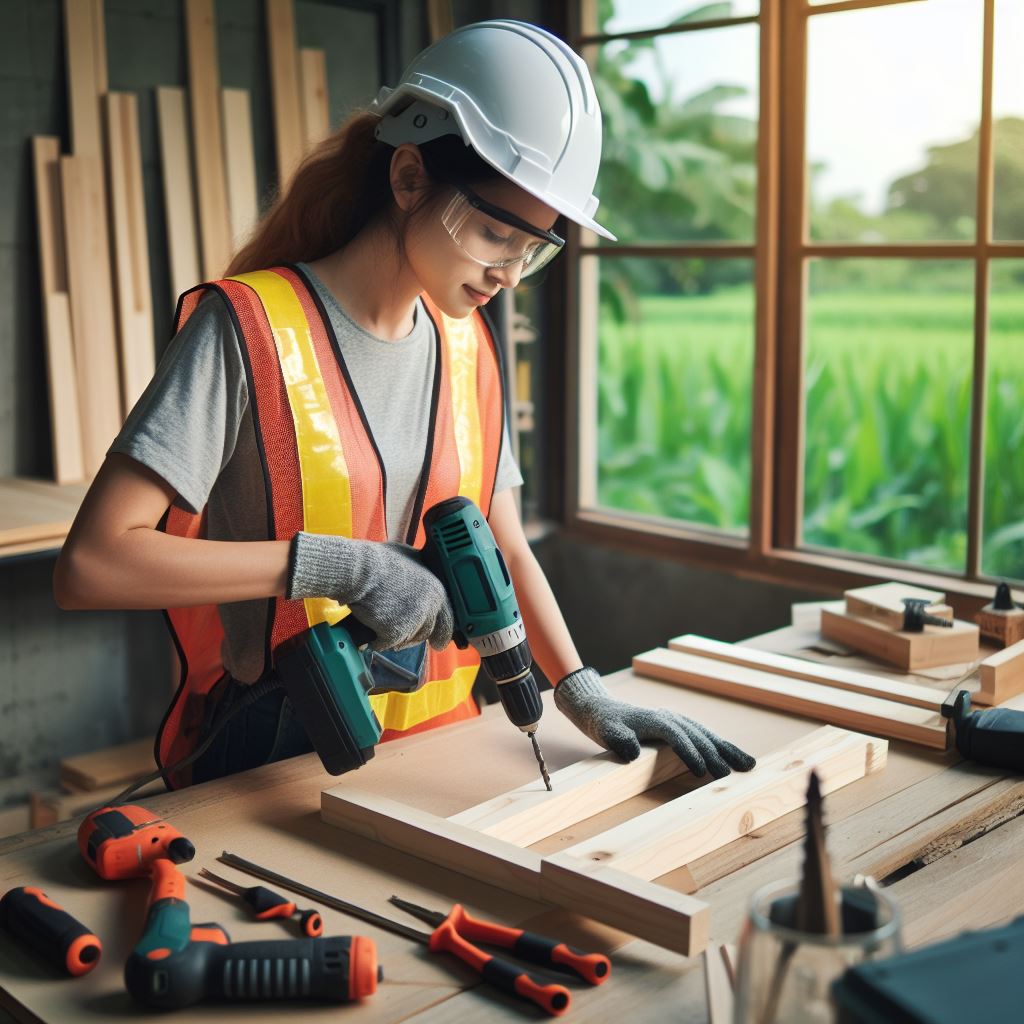Introduction
Welcome to our discussion on “Eco-Friendly Carpentry in New Zealand,” exploring sustainable practices in woodworking.
Carpentry impacts the environment.
Eco-friendly approaches minimize ecological footprint.
New Zealand embraces sustainability.
Sustainable carpentry balances environmental and economic concerns.
As we delve deeper into eco-friendly carpentry, we’ll explore sustainable materials.
Renewable resources reduce environmental impact.
Responsible sourcing ensures sustainable practices.
Eco-friendly carpentry promotes energy efficiency.
Efficient designs minimize waste and conserve resources.
Recycling and upcycling contribute to sustainability.
Sustainable forestry preserves ecosystems and biodiversity.
As we navigate the world of eco-friendly carpentry, we’ll discuss green building certifications.
These certifications verify sustainable practices.
They ensure compliance with environmental standards.
Eco-friendly carpentry aligns with New Zealand’s commitment to sustainability.
It benefits both the environment and communities.
Join us on this journey to explore eco-friendly carpentry practices.
Let’s build a greener future together.
Read: Kiwi Carpenter Salary Insights 2024
Eco-Friendly Practices in Carpentry
Use of sustainable materials
- Sustainable materials such as reclaimed wood and bamboo are environmentally friendly options.
- Using sustainable materials in carpentry helps reduce deforestation and promotes biodiversity conservation.
- Examples of eco-friendly carpentry projects in New Zealand include houses made from reclaimed wood and bamboo furniture.
Energy-efficient carpentry techniques
- Carpenters can implement energy-saving measures in their workshops and construction sites.
- Introducing energy-efficient tools and equipment can significantly reduce energy consumption in carpentry.
- There are success stories of carpenters in New Zealand who have adopted energy-efficient practices, leading to reduced carbon emissions.
Carpentry is a craft that can play a vital role in promoting sustainability and protecting the environment.
In New Zealand, the concept of eco-friendly carpentry has gained significant attention, with professionals embracing sustainable practices and materials.
This section explores two key aspects of eco-friendly carpentry: the use of sustainable materials and energy-efficient techniques.
Use of sustainable materials
In traditional carpentry, the primary material used is wood. However, the growing concern over deforestation and environmental degradation has led to a shift towards sustainable alternatives.
Sustainable materials, such as reclaimed wood and bamboo, have become popular choices for eco-friendly carpentry projects.
Reclaimed wood, for instance, is salvaged from old structures and repurposed into new furniture or construction material.
This not only reduces the demand for newly harvested timber but also prevents old wood from ending up in landfills. Additionally, using reclaimed wood adds a unique character to the finished products.
Bamboo is another sustainable material gaining popularity in carpentry. It is known for its fast growth rate and ability to regenerate quickly, making it an environmentally friendly option.
Bamboo can be used for flooring, furniture, and even as a substitute for timber in construction projects.
The advantages of using sustainable materials in carpentry extend beyond environmental benefits. Reclaimed wood and bamboo are often more cost-effective compared to traditional materials.
They also provide excellent durability and strength, making them ideal for various carpentry projects.
In New Zealand, there are numerous examples of eco-friendly carpentry projects that utilize sustainable materials.
From houses built entirely from reclaimed wood to innovative bamboo furniture designs, carpenters are leading the way in sustainable construction practices.
These projects not only showcase the versatility of sustainable materials but also inspire others to adopt eco-friendly practices.
Energy-efficient carpentry techniques
Apart from using sustainable materials, carpenters can also contribute to environmental conservation by adopting energy-efficient techniques.
By minimizing energy consumption in workshops and construction sites, carpenters can significantly reduce their carbon footprint.
One way to achieve energy efficiency is by implementing energy-saving measures in workshops and construction sites.
Insulating buildings effectively, using natural lighting whenever possible, and optimizing the use of heating and cooling systems can reduce energy demand.
Additionally, promoting proper waste management and recycling practices further contribute to energy efficiency.
Introducing energy-efficient tools and equipment is another crucial aspect of eco-friendly carpentry. Using power tools that have high energy efficiency ratings can save significant amounts of electricity.
Carpenters can also switch to hand tools for certain tasks, reducing the reliance on electricity-driven equipment.
There are inspiring success stories of carpenters in New Zealand who have embraced energy-efficient practices.
From constructing energy-efficient homes with advanced insulation systems to using solar panels to power workshops, these carpenters have proven that eco-friendly carpentry is not only environmentally beneficial but also economically viable.
Basically, eco-friendly practices in carpentry are essential for promoting sustainability and reducing environmental impact.
The use of sustainable materials, such as reclaimed wood and bamboo, can help conserve natural resources and add uniqueness to carpentry projects.
Implementing energy-efficient techniques, both in workshop settings and on construction sites, is another crucial aspect of eco-friendly carpentry.
Through these practices, carpenters in New Zealand are leading the way towards a greener and more sustainable future.
Read: NZ Carpentry: Skills and Tools Needed
Waste Reduction Strategies in Carpentry
Proper handling and disposal of construction waste
- Importance of segregating waste and recycling materials;
- Overview of New Zealand’s waste management policies in the construction industry;
- Positive impact of waste reduction on the environment.
Upcycling and repurposing in carpentry
- Explanation of upcycling and repurposing concepts;
- Examples of innovative upcycling projects by eco-friendly carpenters in New Zealand;
- Benefits of upcycling and repurposing to both the environment and the carpentry business.
Waste reduction has become a significant focus in the carpentry industry worldwide, and New Zealand is no exception.
Carpenters in the country are adopting various strategies to minimize waste and promote environmental sustainability.
This section explores two important waste reduction strategies used in carpentry in New Zealand: proper handling and disposal of construction waste, and upcycling and repurposing.
Personalized Career Consulting
Unlock your potential with expert career advice tailored to your goals. Get personalized guidance and actionable steps toward your dream career in New Zealand.
Get StartedProper handling and disposal of construction waste
The first waste reduction strategy is centered on the proper handling and disposal of construction waste.
Carpenters in New Zealand recognize the importance of segregating waste and recycling materials whenever possible.
By separating different types of waste, such as wood, concrete, and metal, they facilitate the recycling process and minimize the amount of waste sent to landfills.
New Zealand has implemented waste management policies specific to the construction industry. These policies aim to regulate and promote sustainable waste management practices within the sector.
Carpenters must comply with these policies to ensure waste is disposed of responsibly, reducing the negative impact on the environment.
The positive impact of waste reduction on the environment cannot be overstated.
By properly handling and disposing of construction waste, carpenters contribute to the conservation of natural resources, reduce pollution, and decrease energy consumption.
Waste management plays a crucial role in creating a sustainable and eco-friendly carpentry industry.
Upcycling and repurposing in carpentry
The second waste reduction strategy focuses on upcycling and repurposing in carpentry. Upcycling involves transforming waste materials into new and useful products or materials.
Repurposing, on the other hand, refers to giving existing items a new purpose or function. Both concepts emphasize creativity and finding innovative ways to reuse materials.
Eco-friendly carpenters in New Zealand have embraced upcycling and repurposing to create unique and sustainable projects.
They utilize reclaimed wood, salvaged materials, and discarded items to construct furniture, fixtures, and even entire structures.
These projects demonstrate the potential for turning waste into valuable and aesthetically pleasing products.
Upcycling and repurposing offer numerous benefits to both the environment and the carpentry business.
By reducing waste and utilizing existing resources, carpenters help minimize the demand for new materials, thereby conserving natural resources.
Additionally, these practices contribute to a circular economy, where materials are reused rather than discarded, reducing landfill waste and promoting sustainability.
Therefore, waste reduction strategies play a crucial role in promoting eco-friendly carpentry practices in New Zealand.
Proper handling and disposal of construction waste, along with upcycling and repurposing, contribute to minimizing environmental impact and creating a more sustainable industry.
Carpenters in New Zealand are actively adopting these strategies, showcasing their commitment to protecting the environment while delivering quality craftsmanship.
Read: Top Carpentry Courses in New Zealand

Collaborations and Certifications
Collaboration between eco-friendly carpenters and sustainable architects/designers
- An integrated approach to sustainable building and design is crucial for eco-friendly carpenters and sustainable architects/designers to work together effectively.
- The collaboration between eco-friendly carpenters and sustainable architects/designers benefits both parties involved, as it promotes sustainable construction practices.
- New Zealand showcases numerous notable eco-friendly construction projects that result from collaborations between carpenters and architects/designers.
Certifications for eco-friendly carpentry
- There are various relevant certifications and eco-labels in New Zealand that carpentry professionals can obtain to demonstrate their commitment to eco-friendly practices.
- Certifications play a significant role in the carpentry profession as they showcase expertise and adherence to sustainable principles.
- Testimonials from certified eco-friendly carpenters highlight the advantages of obtaining relevant certifications, such as increased credibility and marketability.
Read: Carpentry 101: A Guide for Kiwi Beginners
Conclusion
Recap of the significance of eco-friendly carpentry in New Zealand
Eco-friendly carpentry in New Zealand is of utmost importance as it helps in preserving the environment, reducing waste, and promoting sustainable practices.
Call to action for carpenters and consumers to prioritize sustainability in the industry
It is crucial for both carpenters and consumers to prioritize sustainability by choosing eco-friendly materials, adopting green practices, and supporting eco-conscious businesses.
Final thoughts on the future of eco-friendly carpentry in New Zealand’s construction landscape
The future of eco-friendly carpentry in New Zealand looks promising with increasing awareness and demand for sustainable construction.
By embracing eco-friendly practices, New Zealand can lead the way towards a greener and healthier future.




